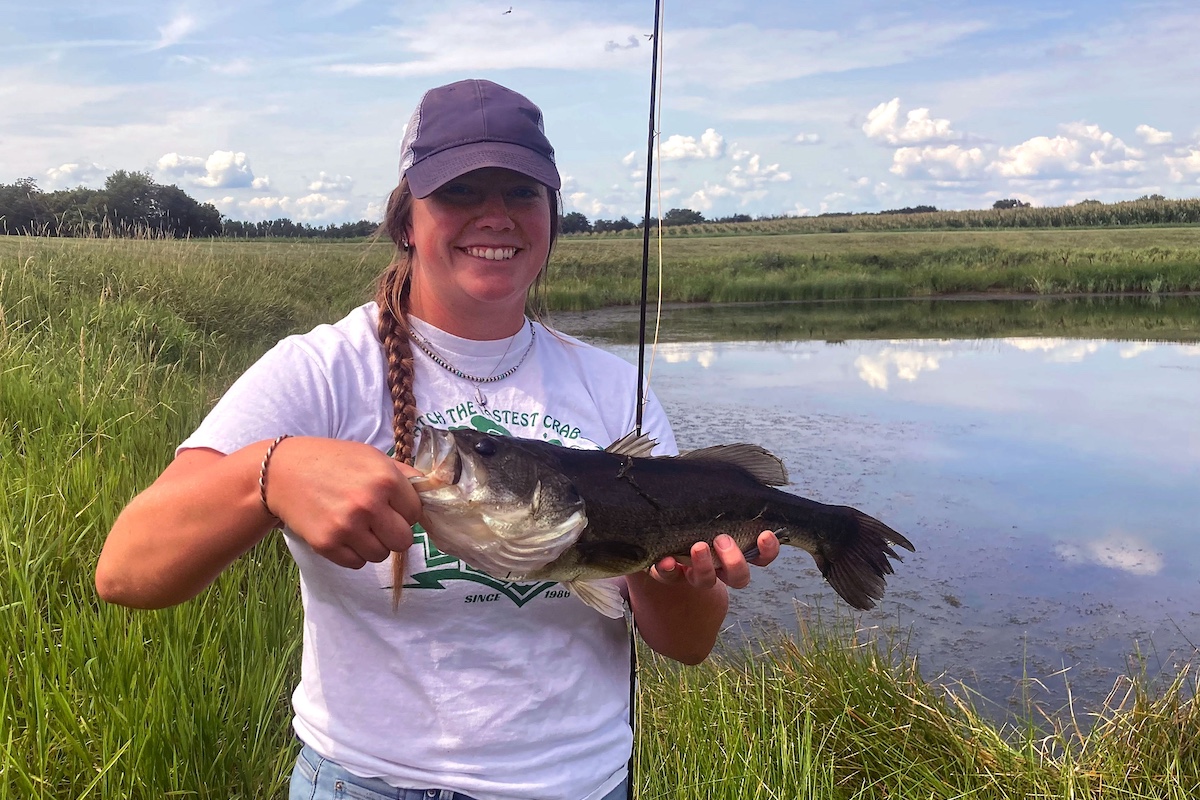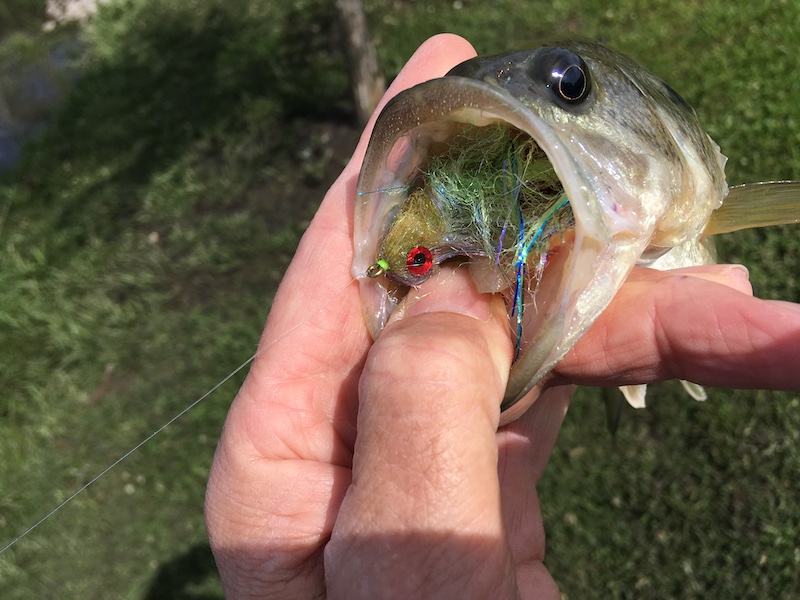
Photo by Tom Yocom.



Photo by Tom Yocom.
“Every new species or technique presents an opportunity for new gear.” The ambitious fly fisher.
Largemouth bass are popular and well distributed throughout Illinois’ waters. Here, we’ll address some of the advantages and gear of fly fishing for them. Keep in mind the difference between fly fishing, and what we’ll call “conventional” tackle, is that a weighted lure does not deliver your lure. It’s the fly line that carries out the fly.
Fly fishing gives you the advantage of being able to splash in a heavy fly or a nearly silent, similar sized, light fly. Weedless is optional. When fishing small pockets along a bank or small openings in cover such as lily pads or weeds, this can make all the difference. Sure, you might hit those pockets using conventional tackle and prove a bass was in there as it bolts away. Then you can drag your lure and hooks(s) back through, or with, all the weeds.

When fly fishing in cover, you can simply pick up and recast the fly as it reaches the end of the open water, instead of dragging your lure and hook(s) through all the weeds between you and your target. That minimizes the disturbance to the nearby fish as well as the need to clear weeds off your lure. This gives you more undisturbed targets in a given area and allows you to cover more water.
If you have cast your fly to one spot and a fish rises in another, you don’t have to frantically reel in your lure hoping the sighted fish is still in the neighborhood. You simply lift the fly from the water and cast it to your new target.
You don’t have to set the hook like a tournament angler on TV. A well-practiced “strip strike” can be best accomplished with the rod tip down and generally pointed at strike, when pulling fly line back and away from striking fish. When the weight of the fish is felt, the rod can be lifted to fight the fish to your side. Should you miss the fish, do not raise the tip of the rod. The fly is in the perfect spot for a second strike or another fish to consider.
With a little practice you can make a right or left curve cast to make your fly follow right along the edge of a drop off or weed bed.
If your fly gets stuck on an object you can often retrieve it with a roll cast, which re-directs it away from the angle at which it became lodged.
Remember the fishing guide’s lament “Why can’t they cast!” No matter what you are fishing for, knowing how to cast is essential for an effective, pleasure-filled experience. Learning how to cast from someone who can teach, as well as cast, is your best investment. The most challenging fly-casting student is the one who has the most reinforced mistakes. Proper instruction will put you years ahead.
Finally, you may want to get a bigger net.
Tom Yocom, fly casting instructor, guide and fly tying instructor who has fly fished for everything from bass to barracuda, from panfish to permit and trout to tarpon. His home waters are now the warm waters of Illinois, which he notes are different from Alaska’s or the Bahama’s. His two favorite things about fly fishing are “the grab,” when a fish hits the fly, and the moment “the lights come on” in his fly casting students’ eyes with their first good cast. A student in a Becoming an Outdoors-Woman illustrated this by exclaiming "I love this! It's like archery, but you don't have to chase the arrows!"
Submit a question for the author